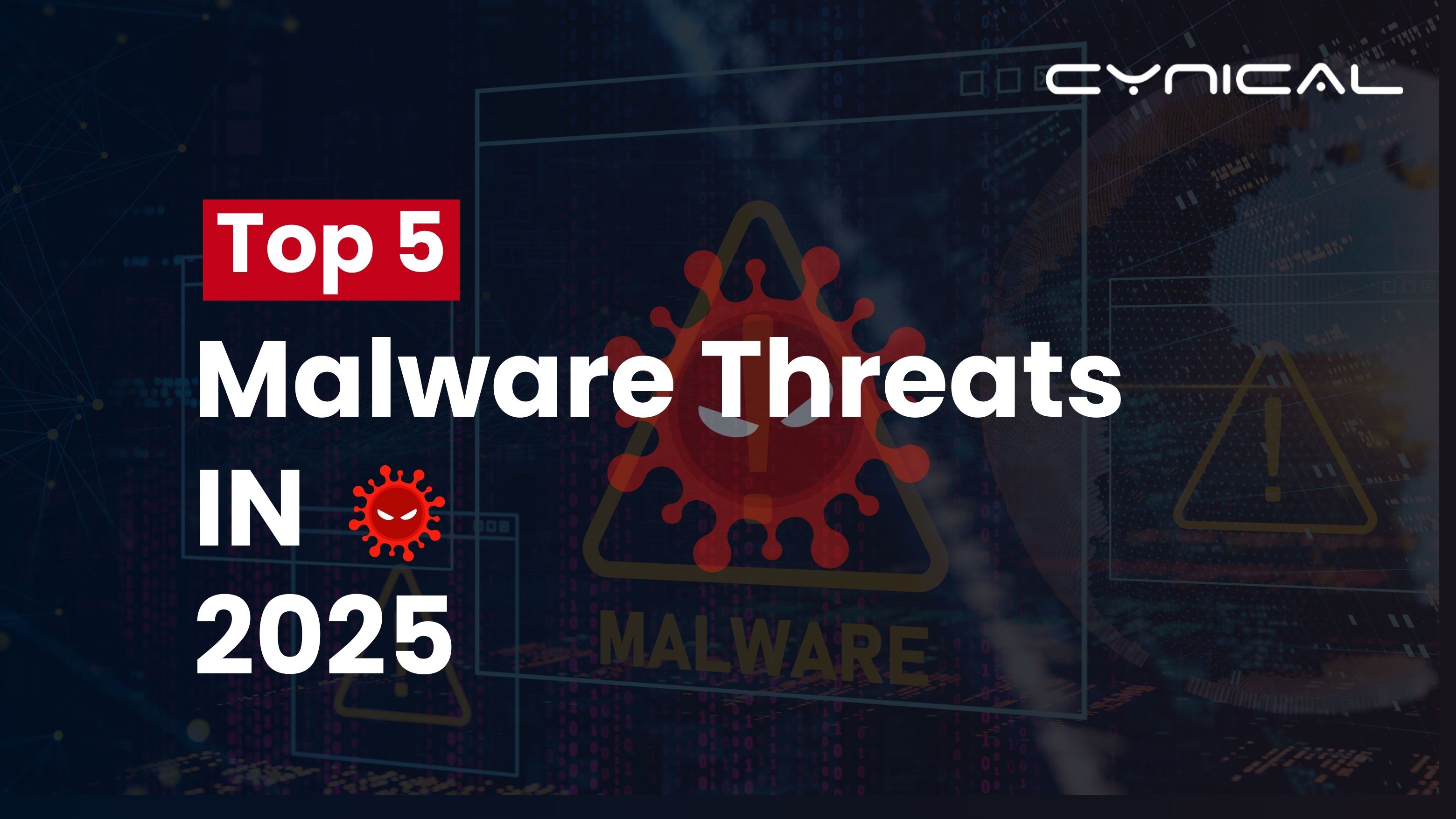- January 9, 2025
- Posted by: Bikash Sharma
- Category: Awareness, Business plans

Top 5 Malware Threats to Prepare Against in 2025
As the digital world grows, so do the risks that come with it. Cyber threats are evolving at an unprecedented pace, with malware continuing to dominate as one of the most dangerous weapons in a hacker’s arsenal. In 2024, global businesses faced significant challenges, with giants like Dell and TicketMaster succumbing to cyber-attacks. The year 2025 promises no respite from such threats. To fortify your organization against these looming dangers, it is imperative to understand the most pressing malware threats and how to counteract them. Here are five malware families to prioritize in your cybersecurity strategy.
1. Lumma
Overview:
Lumma is an information-stealing malware that has been widely distributed on the Dark Web since 2022. It specializes in harvesting sensitive data from targeted applications, such as login credentials, financial details, browsing history, and cryptocurrency wallets.
Capabilities:
- Collects and exfiltrates personal and corporate data.
- Installs additional malicious software on infected devices.
- Updates frequently to bypass traditional security measures.
Distribution Methods in 2024:
- Fake CAPTCHA pages.
- Torrents with bundled malicious files.
- Targeted phishing campaigns.
How to Protect Your Organization:
- Conduct proactive sandbox analysis of suspicious files and URLs.
- Utilize advanced threat detection tools like ANY.RUN to identify Lumma’s activities in real-time.
- Strengthen email security and educate employees on recognizing phishing scams.
2. XWorm
Overview:
First seen in mid-2022, XWorm is a remote access trojan (RAT) that provides cybercriminals with control over infected systems. It is adept at stealing sensitive information, monitoring user activity, and manipulating system operations.
Capabilities:
- Tracks keystrokes and captures webcam footage.
- Steals cryptocurrency wallet data.
- Exploits legitimate digital certificates to avoid detection.
Notable Attacks in 2024:
XWorm was deployed in large-scale attacks using CloudFlare tunnels to mask its activities.
How to Protect Your Organization:
- Block and monitor suspicious network activities using IDS/IPS systems.
- Use robust email filtering solutions to intercept phishing attempts.
- Regularly update and patch software to mitigate exploitation of known vulnerabilities.
3. AsyncRAT
Overview:
AsyncRAT, first observed in 2019, has grown more sophisticated over the years. Often spread through spam emails, this malware uses advanced techniques to infiltrate systems and maintain persistence.
Capabilities:
- Logs keystrokes and records screen activity.
- Steals files and disables security software.
- Distributes additional malware through infected networks.
2024 Trends:
AsyncRAT was frequently disguised as pirated software or distributed in AI-generated phishing campaigns.
How to Protect Your Organization:
- Avoid downloading software from untrusted sources.
- Deploy endpoint detection and response (EDR) solutions.
- Educate employees on identifying fake emails and phishing lures.
4. Remcos
Overview:
Marketed as a legitimate remote access tool, Remcos has been widely abused for malicious purposes since 2019. Cybercriminals leverage it to execute commands, steal data, and manipulate compromised systems remotely.
Capabilities:
- Executes commands on compromised systems.
- Records user activity, including keystrokes and screenshots.
- Uses VBScript and PowerShell scripts to bypass defenses.
Recent Attack Techniques:
- Phishing emails with malicious .zip attachments.
- Exploiting vulnerabilities like CVE-2017-11882.
How to Protect Your Organization:
- Enable multi-factor authentication (MFA) for all accounts.
- Monitor and control the use of scripting tools like PowerShell.
- Use advanced threat intelligence solutions to detect and neutralize malicious activities.
5. LockBit
Overview:
LockBit is a ransomware-as-a-service (RaaS) malware that has emerged as one of the most prominent ransomware threats. It has targeted organizations worldwide, from the UK’s Royal Mail to India’s National Aerospace Laboratories.
Capabilities:
- Encrypts files and demands ransom for decryption.
- Operates with a decentralized network of affiliates, making it hard to dismantle.
- Continuously updates, with LockBit 4.0 expected in 2025.
Law Enforcement Efforts:
Despite arrests of key developers, LockBit remains active and continues to threaten global businesses.
How to Protect Your Organization:
- Back up critical data regularly and store backups offline.
- Use ransomware protection tools and enable file encryption.
- Train employees to identify social engineering attacks.
The Role of Cynical Technology in Malware Defense
At Cynical Technology, we specialize in proactive cybersecurity solutions that help organizations defend against modern threats like Lumma, XWorm, AsyncRAT, Remcos, and LockBit. Our services include:
- Threat Intelligence and Monitoring: Real-time insights to detect and mitigate risks.
- Vulnerability Assessment and Penetration Testing (VAPT): Identify and address vulnerabilities before attackers exploit them.
- Incident Response Services: Swift and effective action to minimize the impact of a breach.
- Employee Training Programs: Equip your team with the knowledge to recognize and prevent malware attacks.
Cyber threats are not going away—they’re evolving. Prepare your organization for the challenges of 2025 by partnering with Cynical Technology. Schedule a consultation today and fortify your defenses against malware threats.
Stay Vigilant. Stay Secure.
